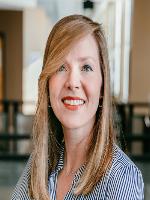

Event Information
Participants will engage in an opener activity. Openers help create an environment that’s conducive to learning. This is the first opportunity to connect with your audience and help them feel comfortable and connect with one another. It's purposeful, is active, and is directly related to or leads to the content being focused on in the training.
Participants will be shown multiple types of literary structures that they see in their everyday lives on social media and how content creators utilize these literary structures to make their own content which is relevant to their audience. How might they make their own? How might they utilize this theory and structure with students during a literacy block in their classroom? Participants will be encouraged to create their own that they can take away from the session and use as an example for their students.
Participants will be exposed to ways in which dictation technology can be utilized during creation of their own literary structures. How might this help a struggling reader or writer in your classroom? Participants will experiment with dictation technology on their own devices.
Participants will engage in a closer activity. The closer brings this session full circle and ends with a purpose by including positivity, identifying takeaways, celebrating the time invested and the hard work, and reflecting and committing to action. We want to ensure that participants leave with a clear understanding of what they have learned, as well as a sense of motivation to apply that learning in their work. The close will be a purposeful reflection because without it there is no assurance that anything will transfer to classroom practice.
Opener: 3 minutes
Literary Structures: 20 minutes
Dictation Technology: 5 minutes
Closer: 2 minutes
Grouping strategies will be used to get participants to work together with someone they may not know.
Devices - laptops or mobile devices can be used for Dictation Technology activity.
Opener and Closer activities mimic what can be done with students in the classroom.
Practices and approaches learned in this session are based on Sylvia Ashton-Warner’s Language Experience Approach: https://drive.google.com/file/d/1ZLizBmlI-ZpH8w9c-eEMjMRJs5_5-_-v/view?usp=sharing
The Talk to Read© program is based on Dr. Betsy Baker’s field research:
https://www.moare.com/vnews/display.v/ART/611674b48613e
https://ila.onlinelibrary.wiley.com/doi/abs/10.1002/rrq.170
https://www.columbiamissourian.com/news/k12_education/talk-to-read-is-meant-to-help-students-turn-words-they-speak-into-words-they/article_5badf2a6-997b-11ec-b3da-1f5cd0472c37.html
